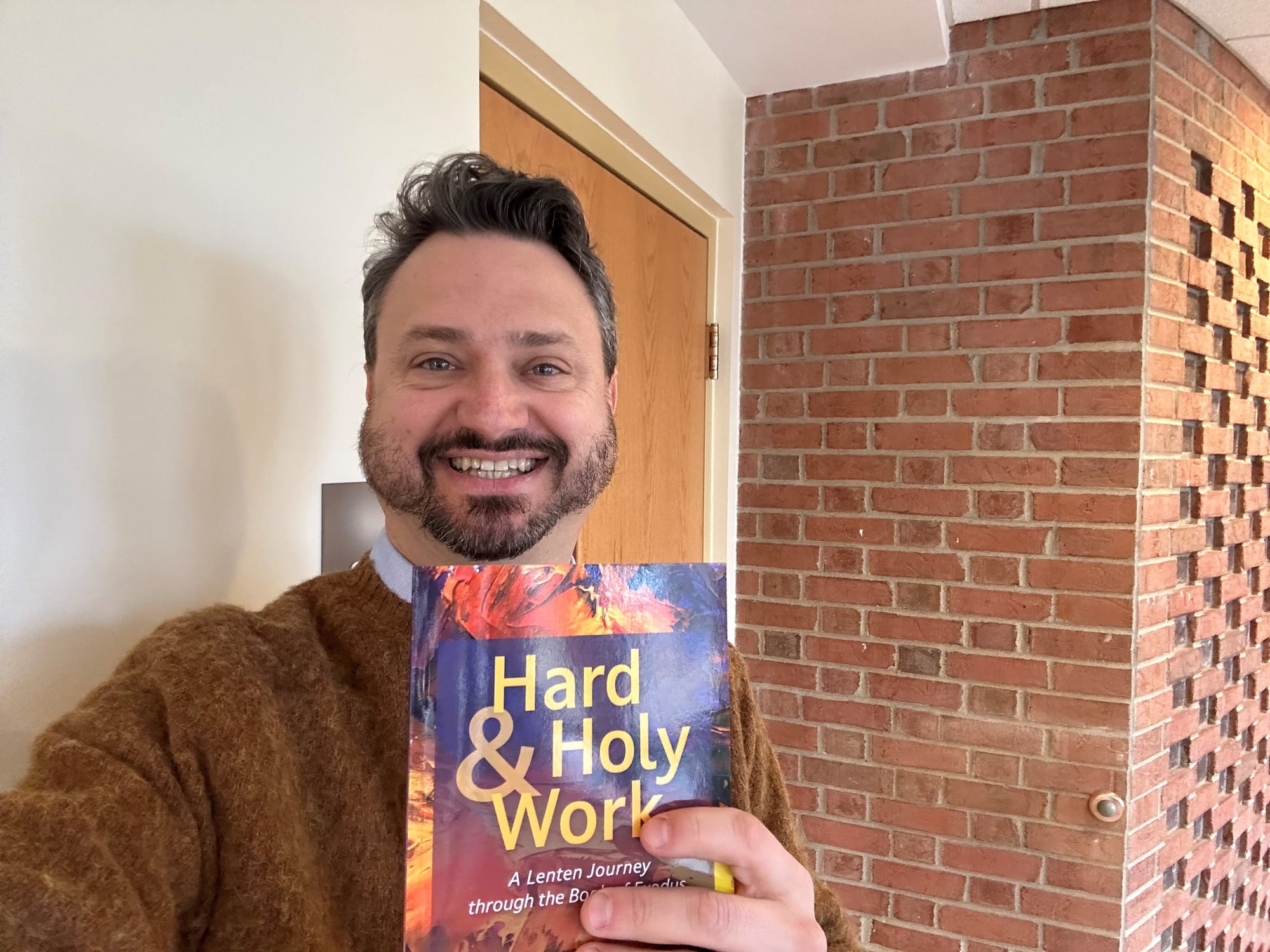The Lenten Journey Begins

This year's Lenten season is special to me because I co-wrote a bible study for the season. It's so fun to see folks using this material as part of their Lenten practices.

We will use some selections from the book this Lenten season here to call ourselves to awareness and action.
Sacred Geography
What places and spaces around you call you to pay attention and act for justice? What space do you visit or pass by that beckons you to listen more attentively or look more deeply or breathe more deeply? What place do you see that calls for you to take action or work for justice?
In 1958 the Trappist monk Thomas Merton, who lived at the Abbey of Our Lady of Gethsemani near Bardstown, Kentucky, was visiting downtown Louisville when he had a vision, a spiritual revelation.
It may seem odd for a monk, living a quiet and devoted life away from the hustle and bustle of the city, to come to a crowded street corner in downtown Louisville and have a spiritual awakening!
Merton’s place of epiphany later became a physical landmark in Louisville. A plaque from the Kentucky Historical Society stands at the site of Merton’s life-changing moment, and tourists worldwide visit this ordinary and extraordinary site. The corner of Fourth and Walnut stands as an invitation to pay attention, to truly see others, and to recognize the interconnected reality of our relationships. (By the way, if you ever search for the site, the city changed the name of Walnut Street to Muhammad Ali Boulevard in 1978 to honor a local Louisvillian.)
Decades later, another site was created one block north and two blocks west of Merton’s mystical experience. It became a memorial site for Breonna Taylor, the young, Black medical worker who was shot and killed by Louisville police officers during a severely mishandled raid on her apartment in March 2020. Her murder, a significant event in our city and our country, contributed to the ever-growing national movement against police brutality and for racial justice. That summer, local protestors began gathering at Jefferson Square Park, a one-acre downtown park and transformed it into what later became known as Injustice Square. They continued to gather here for the remainder of the year, building a community of resistance and accountability.
Today, Injustice Square Park remains the gathering space for local justice movements, protests, and gatherings. A new historical marker now stands alongside the park, at the corner of 6th Street and Jefferson, calling us to take action against hatred, systemic evil, and systems of oppression.
These two sacred spaces – Fourth and Walnut and Injustice Square – and the space between them encapsulate two themes of Lent: awakening and action.
There’s something about Merton’s invitation to pay attention at Fourth and Walnut which calls our feet to march toward the work of liberation at Injustice Square. And there’s something about the work of justice and liberation which calls us toward a greater awakening to the world around us and to where God is within it. These two points on the city map are not in tension with one another but instead seem to be drawn toward one another. The pull between these two points in the sacred geography of Louisville reminds us that we cannot fully or faithfully live as the people God is calling and creating us to be without awakening and action. Lent summons us in these exact directions. Traditionally Lent has been a season of pausing and self-reflection—an inward posture—but also, as part of that introspection, a time to engage in “almsgiving”—an outward posture. Paying attention and working for justice, then, deepen our Lenten practices and transform our understanding of them.
What places and spaces around you call you to pay attention and act for justice?
A Benediction (Or Miscellaneous Thoughts)
- If you know someone who might like to read this newsletter, forward this email to them.
Member discussion